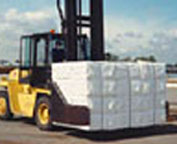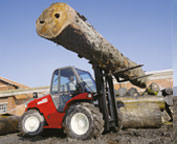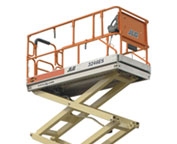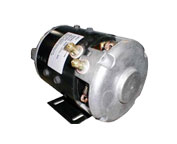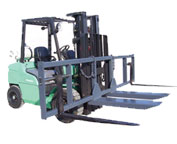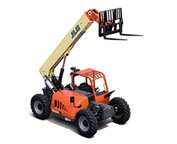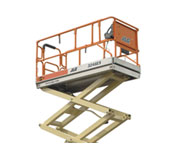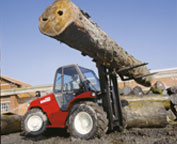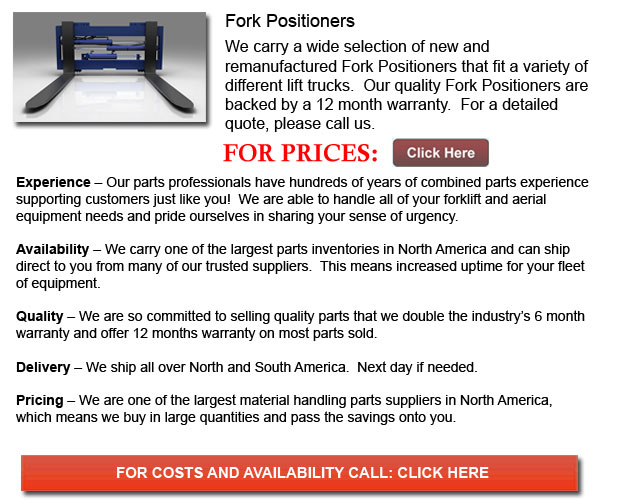Forklift Fork Positioner - A fork positioner is a device made out of top quality materials intended to be able to withstand the most difficult operations and work environments. This piece of equipment can enable the person driving to work the blades hydraulically without leaving the seat. Side shifting models have the extra ability to laterally position the entire load or the arms so as to facilitate much more exact lifting and placement in a faster and much more effective manner.
The blade pocket is quite unique and can enable the person operating it to securely swing the forks into position without any worry of damaging the positioning cylinders. This can allow the operator the choice to be able to execute simultaneous or independent fork movement, depending on the job requirement. For most forklifts with non-OEM carriages, complete carriages are required. Standard OEM carriages could be converted into fork positioners on available units.
 Click to Download the pdf
Click to Download the pdf
Forklift Parts
Pulp Clamps
Pulp Clamps - There are many different lift truck accessories which could be used so as to make forklifts rather more useful. Snowplow attachments can be mounted onto the front of a lift truck. A scoop bucket could be helpful if the job requires moving soil, sand, snow, or gravel. A double block handler allows the forklift operator to pick...
More
Rough Terrain Forklift Attachments
Rough Terrain Forklift Attachments - There are actually two classifications of lift trucks within the manufacturing industry, the rough terrain model and the industrial version. Rough terrain lift trucks appeared in the 1940's designed primarily for use on uneven roads, best for lumberyards and construction sites, providing hauling muscle when there was no paved surface available.
Usually, most rough terrain...
More
Attachment for Industrial Scissor Lifts
Industrial Scissor Lift Attachments - These days, there are many kinds of lifting equipment used lift and move goods and materials. Popular machinery used on the jobsite will consist of pallet trucks, chain slings, cranes, pulling machines and shackles. The significance of lifting machinery to be able to lessen the use of manual labor and ensuring industrial safety is paramount....
More
Drive Motor Forklifts
Forklift Drive Motor - MCC's or otherwise known as Motor Control Centersare an assembly of one section or more that contain a common power bus. These have been utilized in the vehicle industry ever since the 1950's, in view of the fact that they were used lots of electric motors. Now, they are utilized in a variety of commercial and...
More
Spreader Bar for Forklift
Forklift Spreader Bars - ELME has been proudly operating ever since the year 1974, becoming the biggest independent spreader manufacturer in the world. They are a dedicated manufacturer of spreaders utilized for numerous various applications like the handling of containers, swop bodies and trailers.
Engineering is done in-house by way of making use of the most up-to-date CAD systems and...
More
JLG Telehandler Attachment
JLG Attachments - After retiring in the late 1960's, John L. Grove started out on a cross country RV trip. After spending numerous years establishing his family built crane business with his brother, John had no idea that this trip would give birth to the rise of JLG Industries, Inc. The world leader of mobile aerial work platforms and precision...
More
Part for Scissor Lift
Scissor Lift Parts - Scissor pallet vehicles are made for moving and hauling individually stacked pallets by integrating a lifting apparatus that allows the pallets on the vehicle to be elevated. This equipment is a first-rate tool for working in space limited locations that is not going to allow a full-sized lift truck. The scissor pallet vehicle is also exceptionally...
More
4 Wheel Drive Forklift Attachment
4 Wheel Drive Forklift Attachments - There are in reality two distinctive classifications of forklifts within the material handling market, the industrial model and the rough terrain model. Rough terrain lift trucks first came on the marketplace in the 1940's and were being predominantly used on coarse surfaces, best for areas where no covered roads were accessible, like building sites...
More


![]() Click to Download the pdf
Click to Download the pdf
